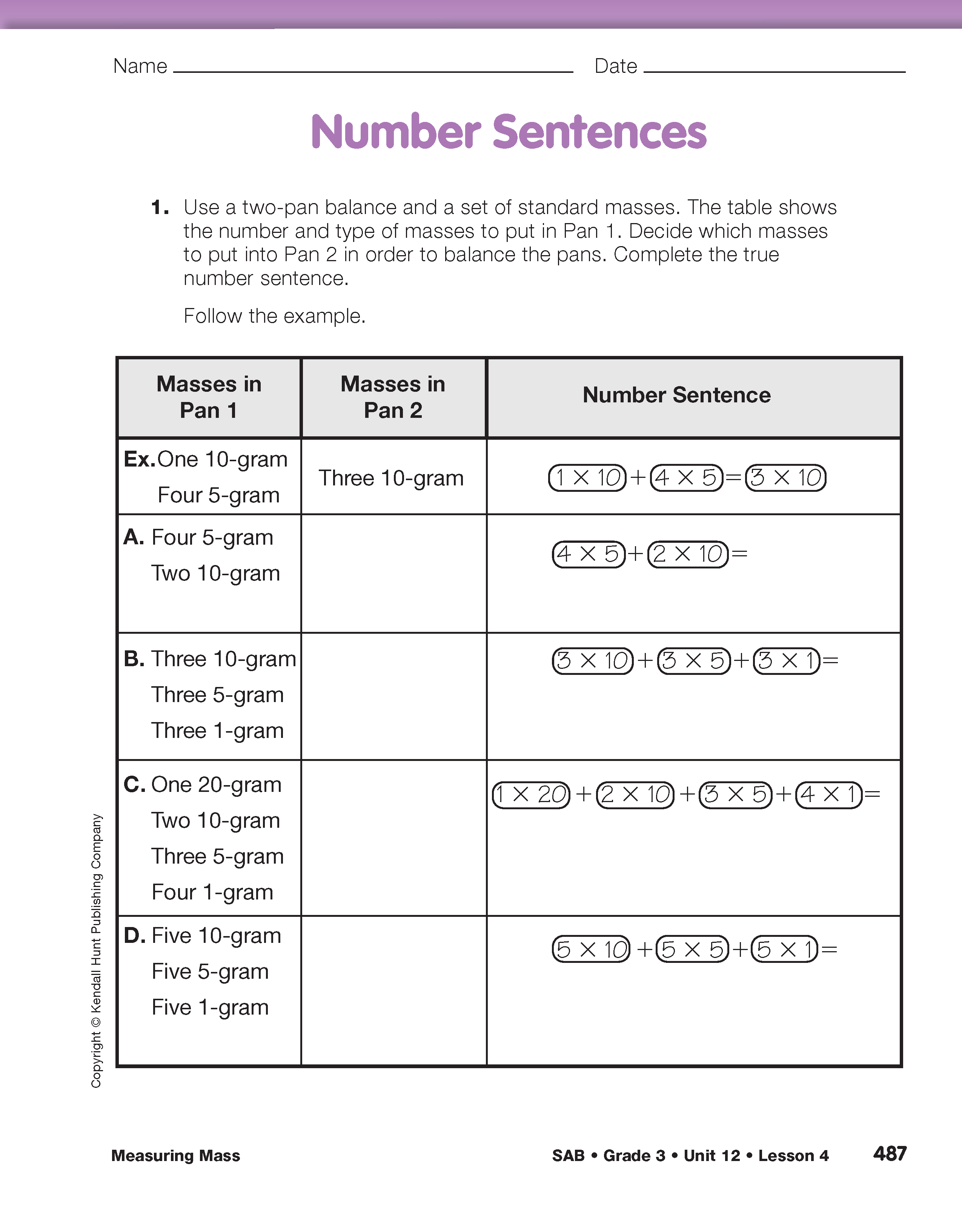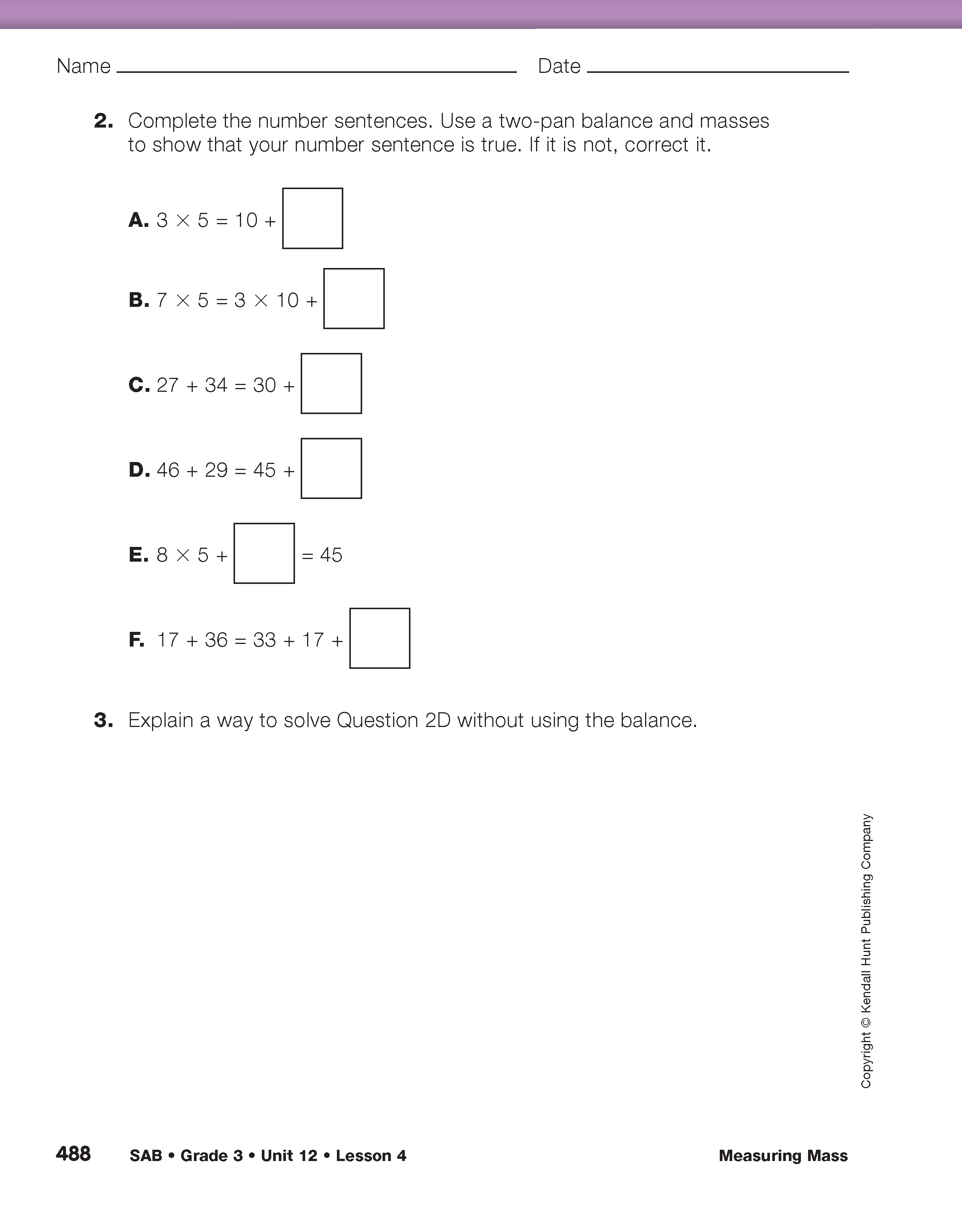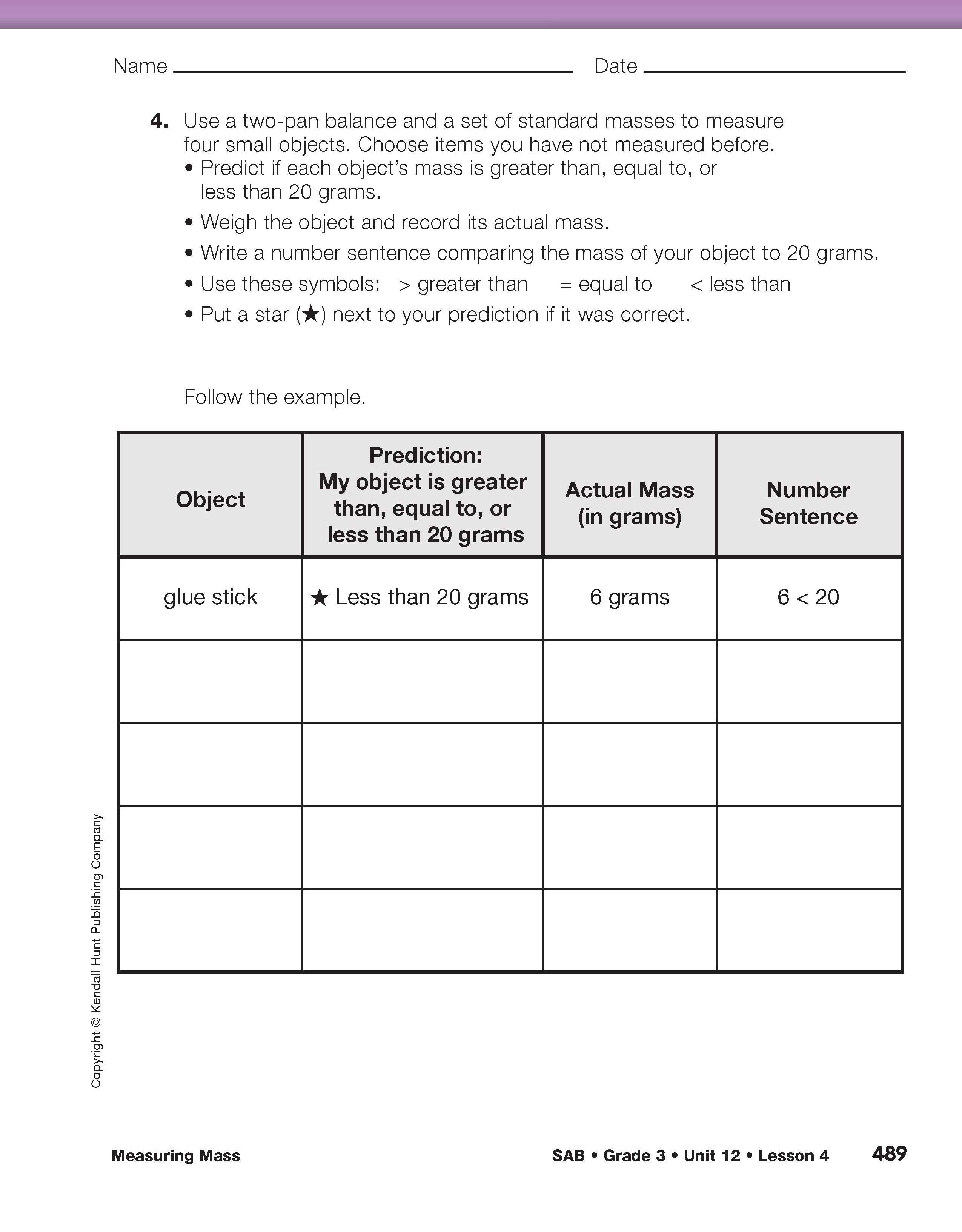Measuring Mass
Est. Class Sessions: 2–3Developing the Lesson
Part 3. Writing Number Sentences
Using two-pan balances to complete number sentences allows students to translate between concrete representations and symbols. They use the balances to complete three types of number sentences on the Number Sentences pages in the Student Activity Book. See Content Note. Direct students' attention to these pages. To complete Questions 1–4, each student group will need a two-pan balance and a set of standard masses. Review the directions on the page with the students before assigning the questions. Discuss the example given in Question 1 with the prompts that follow.
Question 1 asks students to place given numbers of masses into Pan 1 and then to find the number and type of masses to place into Pan 2 in order to balance the pans. Pan 1 is on the students' left. Pan 2 is on the students' right. The given masses are represented in a number sentence on the table and students must complete it to make it a true sentence.
After reading the directions, display the number sentence 1 × 10 + 4 × 5 = 3 × 10 as shown on the table and ask:
Questions 2–3 ask students to complete open number sentences and then show that they are true using their two-pan balances. Students can use their balances to help them solve the problem using a guess-and-check method. Or they can solve the problems using their number skills and then show that their solutions are correct using the balances.
Question 4 asks students to mass several small items. Suggest that one be the item they brought from home and that the others come from their desks or the classroom. Tell students to pick items that are small enough to fit into their hands, and ones they have not yet massed. Suggested school items might include scissors, erasers, connecting cubes, packs of self-adhesive notes, paperback books, glue, staplers, a box of crayons, and markers. First they predict whether the item's mass is greater than, less than, or equal to 20 grams. Then they measure and record the item's mass. Finally, they write a number sentence using the symbols for greater than (>), less than (<), or equal to (=). They mark correct predictions with a star on the table.
After explaining the directions, review the three symbols >, <, and =. Display the following number sentences and ask students to place the correct symbol within the sentence:
25 ![]() 15
15
![]() 20
20
10 ![]() 10
10
![]() 16
16
32 ![]() 30
30
Assign Questions 1–4 to student pairs.

















